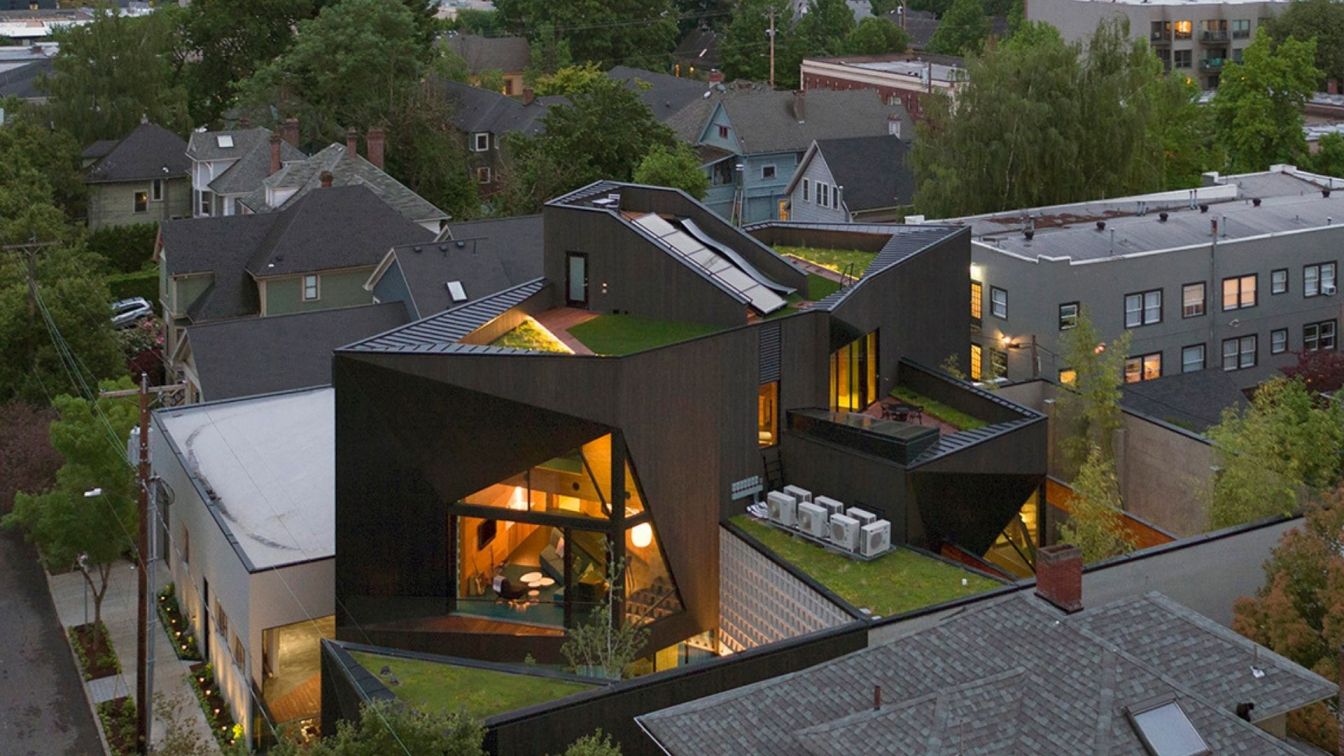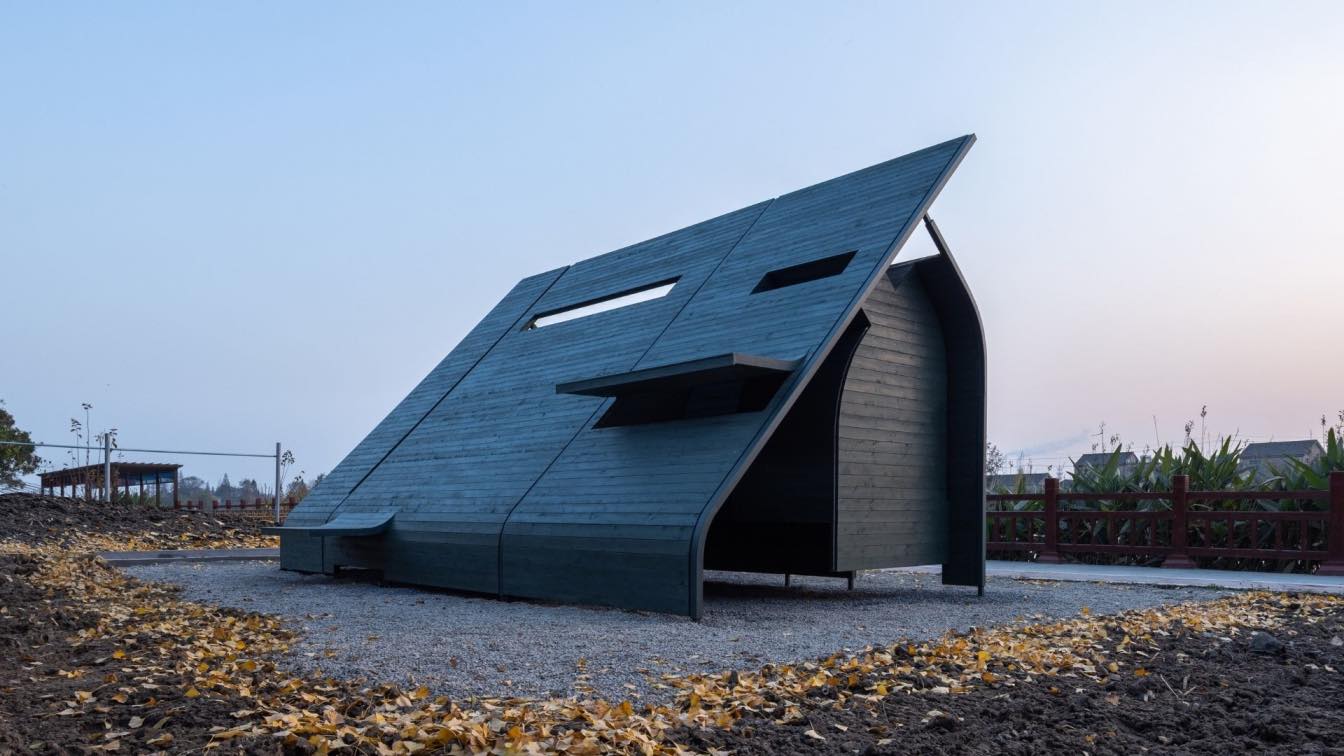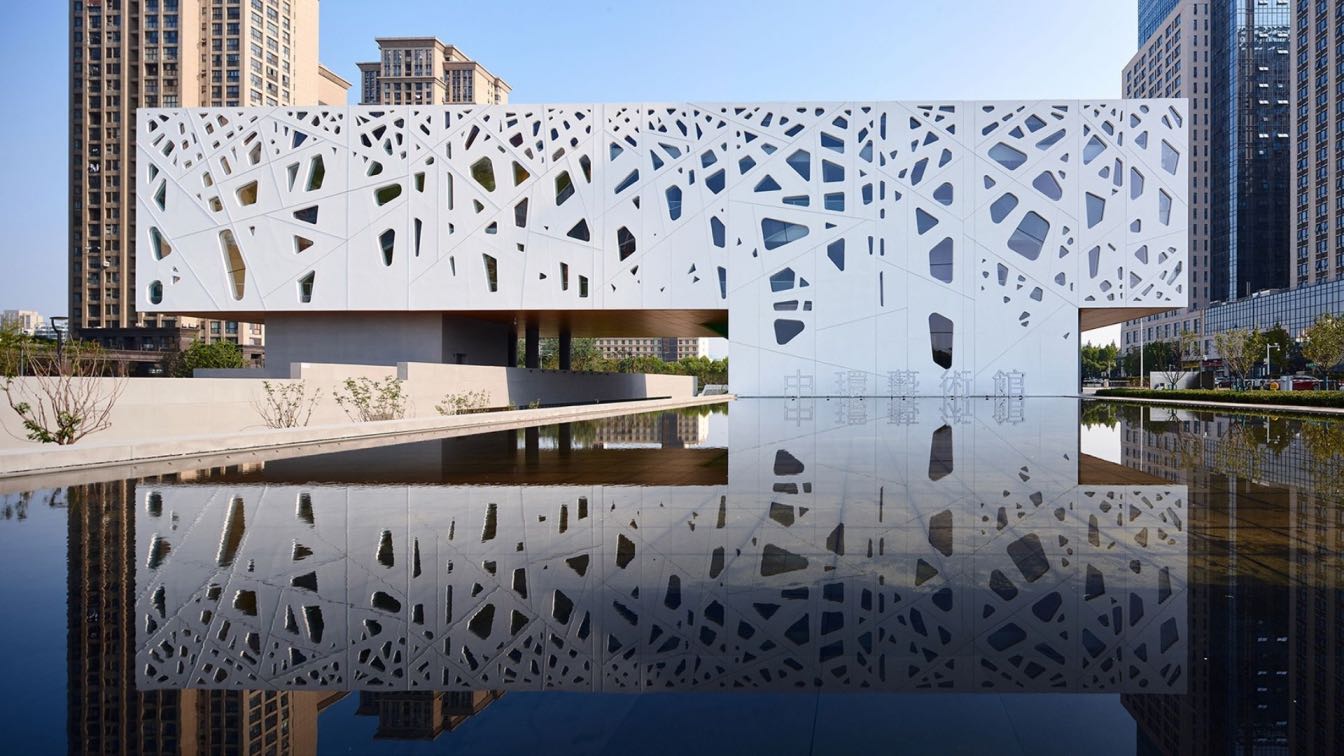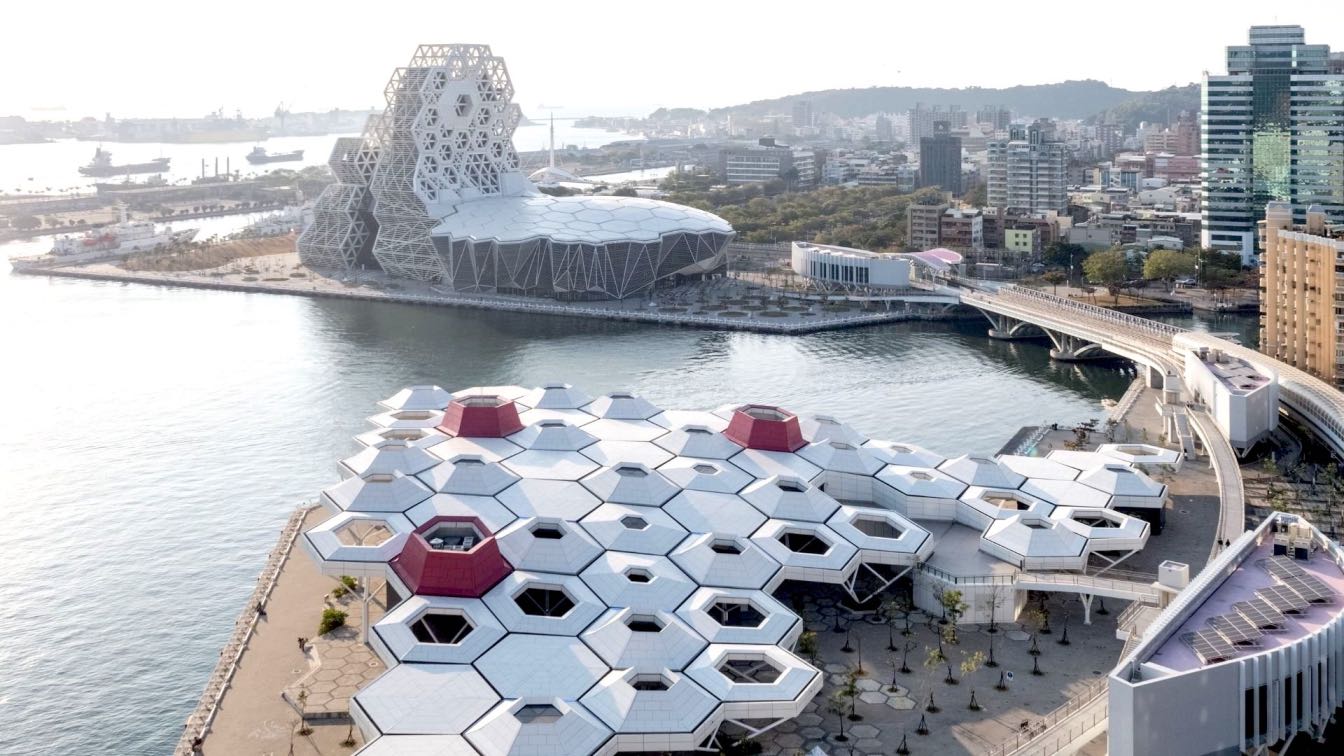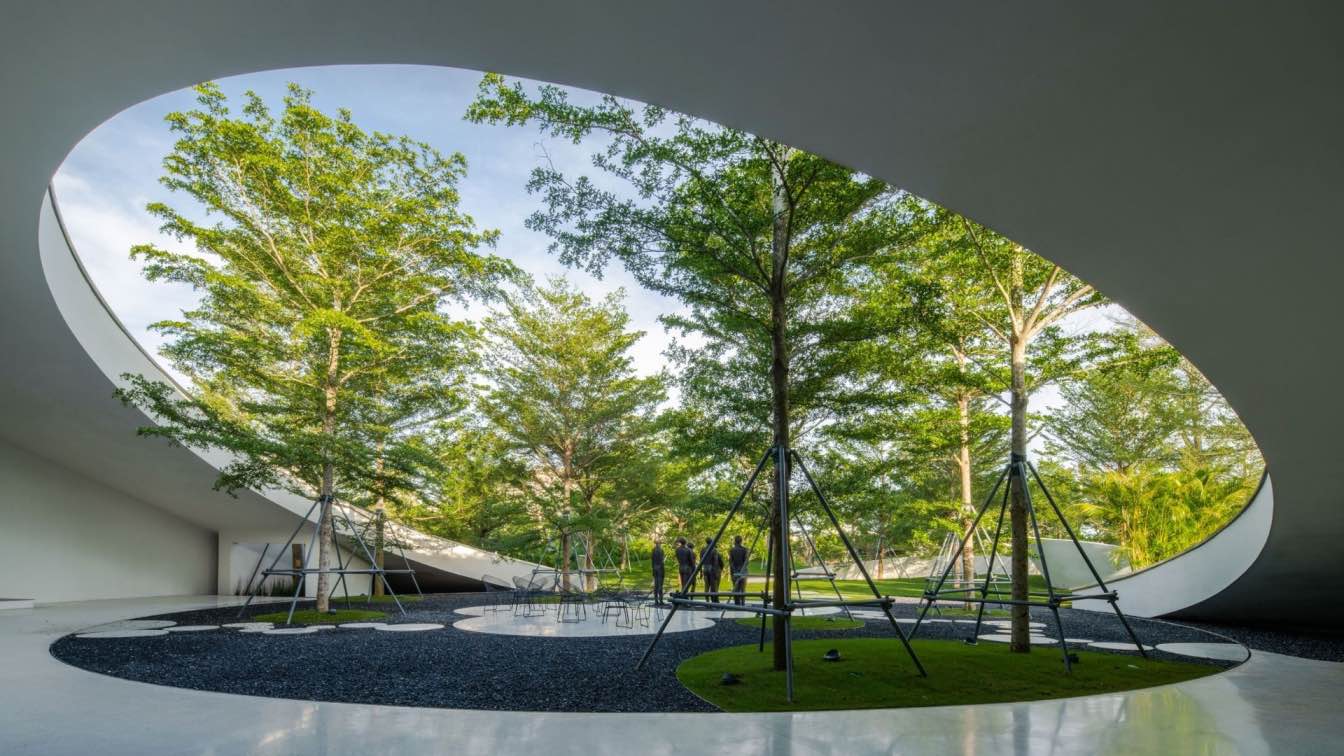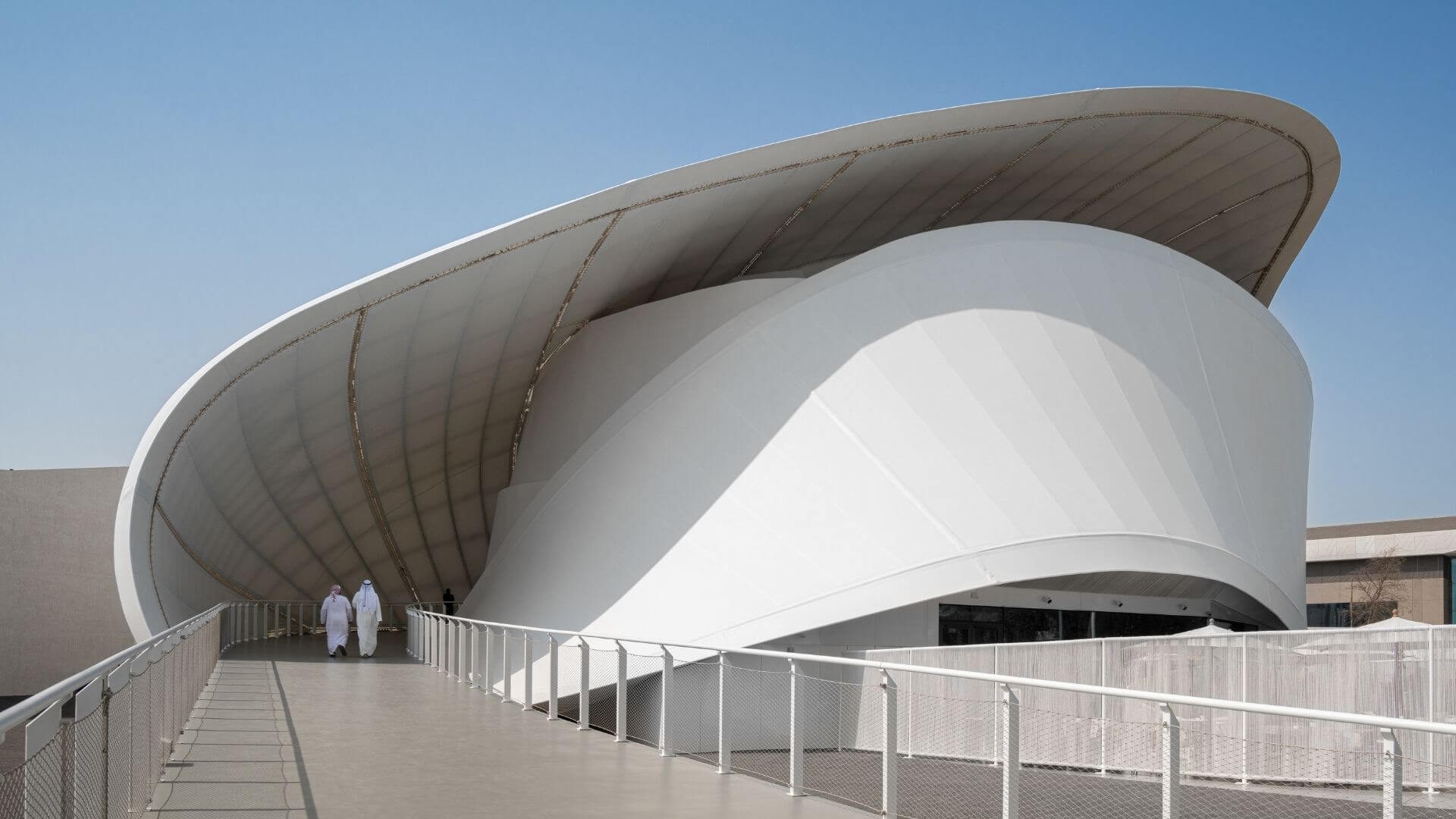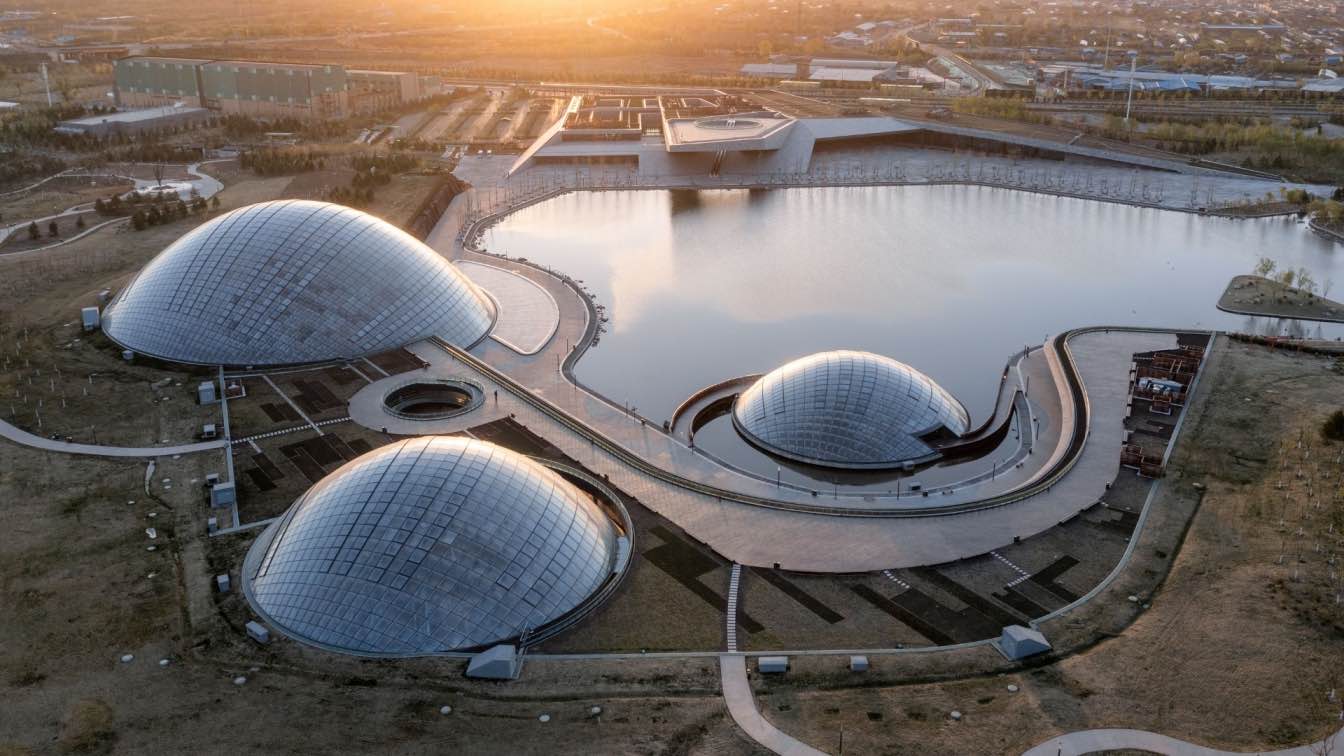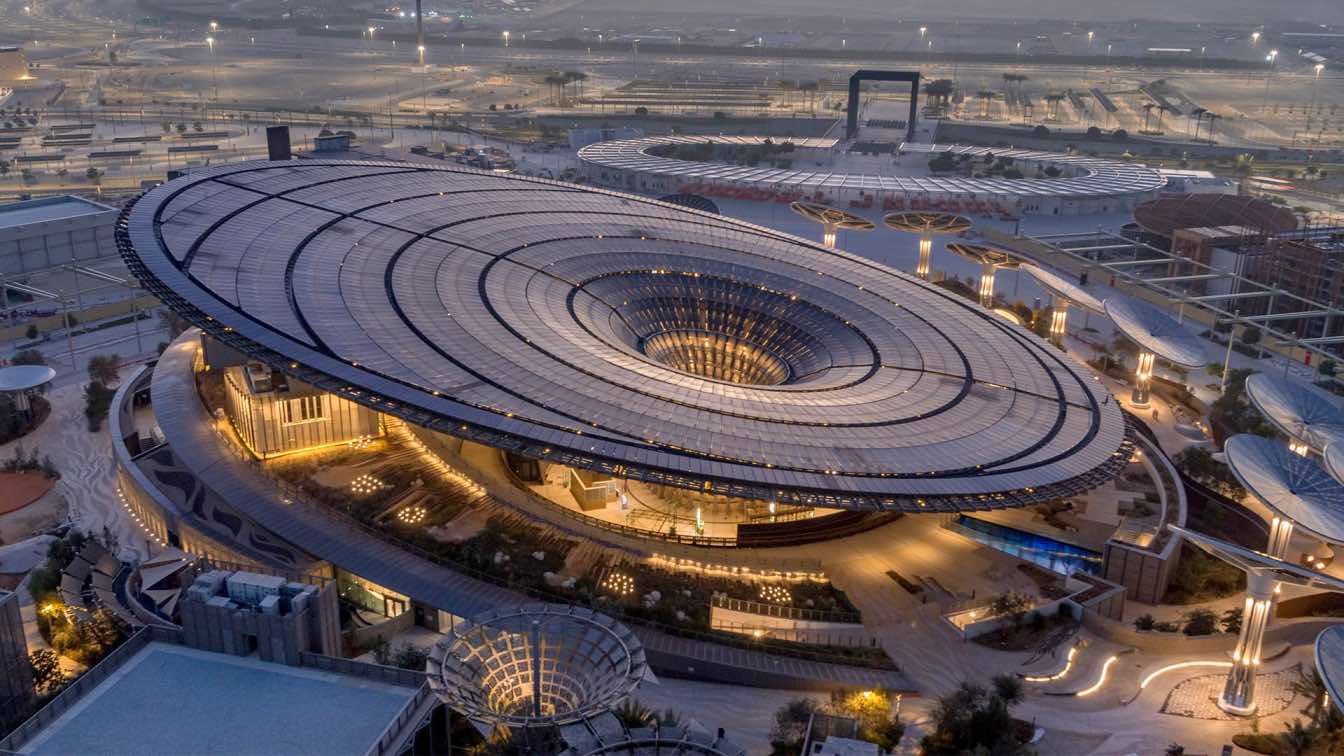Skylab Architecture designs the N M Bodecker Foundation in Portland, Oregon. The foundation provides creative communities with a dynamic mix of in-person spaces for workshops, gathering, and collaboration.
Project name
The N M Bodecker Foundation
Architecture firm
Skylab Architecture
Location
Portland, Oregon, USA
Photography
Jeremy Bitterman, Stephen Miller (video)
Design team
Jeff Kovel (Design Director), Brent Grubb (Project Manager), Jamin AAsum (Project Architect), Kyle Norman (Project Architect), Dustin Furseth (Project Architect), Amy DeVall (Interior Designer), Stephen Miller (Design & Visualization)
Collaborators
Geo Design (Geotechnical Engineer), Coral Sound Inc. (Acoustical Engineer), Ambient Automation (AV), The Facade Group (Building Envelope & Waterproofing), Michael Cronin Acoustic (Recording Room Consultant), Dream Land Skateparks (Skatepark Consultant)
Interior design
Skylab Architecture
Civil engineer
Harper Houf Peterson Righellis Inc.
Structural engineer
Structural Engineering (SCE)
Environmental & MEP
Interface Engineering
Lighting
Lighting Workshop
Construction
Skylab Construction Co.
An experiment of archetype. Are there any new architectural space prototypes that can be discussed? This is the starting point of this experimental project. This space experiment is located near the river in the tourist area of Jiangxin Island in Zhenjiang, Jiangsu province.
Project name
Wood Pavilion #1 Experiment on space prototype (I)
Architecture firm
LIN Architecture
Location
Zhenjiang, Jiangsu, China
Photography
LIU Songkai, Lin Lifeng
Principal architect
Lin Lifeng, Chen Yuwei
Design team
Chai Zongrui, Li Xueqing, Huo Yan, Huang Qiyue, Zhong Yaoyao, Ren Yiyang, Chen Xiaochi, Chen Luyao, Yang Chenxuan, Wang Xuening, Zhang Zhen, Li Xiaomin, Zhu Xuanyi, Wu Yifan, Lu Zheyuan, MAO Dangran, Wen Sirui
Collaborators
Chen Yuwei, Chai Zongrui, Li Xueqing, Huo Yan, Huang Qiyue,
Construction
Shanghai Kangle Wood Structure Co., LTD
Client
Aoya Design, Jiangxinzhou Wutao Village
Typology
Cultural › Pavilion
A floating art gallery together with its large 'manmade nature' landscape surroundings creates an urban art utopia where art and artists meet the public. The place created by both the architecture and the landscape, is a highly welcoming and inclusive public space, where people can easily access, experience, and celebrate art while feeling inspire...
Project name
The Central Ring Gallery
Architecture firm
Studio A+
Location
Hefei City, Anhui province, China
Photography
Chen Su, Fang Chun
Principal architect
Min Wang
Design team
Min Wang, Mei Ding, Hui Li, Wenwen Zhang, Chongshuo Wang , Xin Jing, Yuwei Wei
Material
Concrete, glass, steel
Client
An Hui Central Ring Real Estate Group
Typology
Cultural › Art gallery
The project consists of an outdoor auditorium for 12,000 people , a concert hall for 3,500 people , six live houses ("whales") , five restaurants connected by a walkway, two towers with an office program, a museum and rehearsal rooms, a center of exhibitions and a series of parks and walks that connect the entire intervention.
Project name
Kaohsiung Pop Music Center
Architecture firm
Manuel Monteserin
Location
Kaohsiung, Taiwan
Photography
Shun Chen, Chen Li Hsiien, Yi-Hsien Lee, Darren Teng, Chiung-Yao Tseng, Chien Ming Chen, Chen Hung, Ian Choi, Kano Chang, Lo Ruey-Lin, Su, Bo-An, Nicolas Leng冷家豪, Yi-Hsien Lee, Monteserin, Ian Choi, Terry Chiang 江彥駐, Yu-Zhi Lin, Kevin Lin
Principal architect
Manuel A. Monteserín Lahoz
Design team
Beatriz pachón Castrillo, Javier Simó de Pedro, Meng Han Hsieh, Jose Lu, Yen Chu A’lvaro, Joren Huang, Yu-Lin Chan, Tsung-Lin Lee, Iñigo Redondo, Luis Marcos, Alicia Domingo, Beatriz Crespo, José María De Cárdenas, Luis Ybarra Gutiérrez, José Luis López de Lemus, José Carlos Oliva Garrido, Tomás Osborne Ruiz, Marian Bada Sánchez, Antonio Miguel García Librero, María Castro Hormigo, Manuel Tirado Crespo, Rosa Cantillana Merchante, Marco Antonio García Gálvez, Salvador Sanchez Gonzalez, Rubén Silva Lobato, Alejandra Díaz de Cárdenas, Esther Espejo Lucena, Fernando Gallinato Díaz, Isabel García Madrona, Angel Linares Gar´cia, José, Buzón González, Carmen Zammarchi , Luis García Rodríguez
Collaborators
Mark Ongg, EDDEA (Partner and project manager),
Structural engineer
結構顧問Structural Consultant, 科建聯合工程顧問有限公司 Tec-Build United Structure Engineer Office, 聯邦工程顧問股份有限公司 Federal Engineering Consultant Inc., BAC ENGINEERING CONSULTANCY GROUP
Environmental & MEP
Parsons Brinckerhoff
Landscape
Old Farmer Landscape Architecture Co.
Lighting
照明顧問Lighting Design Consultant
Client
Kaohsiung City Government
Typology
Commercial › Music Center
Art has always been the driven force for WIDE HORIZON, a famous real estate developer, to motivate the cohesion of a community. Located at Jiangdong New District, Haikou, the capital of Hainan Province, Luxe Art Gallery is a modest earth-sheltered building that stands in a panoramic ecosystem of oceans, rainforests, rivers and lakes.
Project name
Luxe Art Gallery
Architecture firm
40 Studio
Location
Jiangdong New District, Haikou, China
Photography
Zhu Di @ SHADØO PLAY, He Chuan @Here Space, Here Architecture
Design team
He Ou & Qv Liming
Interior design
ENJOY DESIGN
Civil engineer
China Construction Fourth Engineering Bureau Co., Ltd.
Landscape
Guangzhou Landscape Bidder Design Co., Ltd., Changsha Moby Landscape Planning & Design Co., Ltd., Landscape Architects 49
Lighting
Chengdu Dipet Lighting Design Consulting Co., Ltd.
Construction
Hainan Xingyuan Landscape Engineering Co., Ltd.
Typology
Cultural › Art gallery
The main inspiration for the pavilion design comes from Metaform Architects' desire to convey a true reflection of Luxembourg’s past, present, and future, while also presenting the values of the country: small but ambitious, intriguing yet reassuring, and above all generous and open.
Project name
The Journey of Senses
Architecture firm
Metaform Architects
Location
Dubai, United Arab Emirates
Photography
Steve Troes Fotodesign, Metaform Architects
Principal architect
Shahram Agaajani, Thierry Cruchten, and G.G Kirchner
Collaborators
Goblet Lavandier & Associés Ingénieurs-Conseils S.A (Technical engineer), Jangled Nerves (External Collaborator)
Structural engineer
AuCARRE
Client
GIE LUXEMBOURG @ EXPO2020DUBAI
Typology
Cultural › Pavilion
The project was launched with the ambitious objective of transforming a former coal-mining area into a landscape park, which is not only a model for the landscape design that is so essential in China, but also contains a building infrastructure that can be used for researching into and offering people access to and information about natural ecosyst...
Project name
Taiyuan Botanical Garden
Architecture firm
Delugan Meissl Associated Architects (DMAA)
Location
Jinyuan District, Taiyuan City, China
Design team
Maria Dirnberger, Volker Gessendorfer, Bernd Heger, Tom Peter-Hindelang, Klara Jörg, Rangel Karaivanov, Leonard Kern, Kinga Kwasny, Toni Nachev, Martin Schneider, Petras Vestartas
Collaborators
Institute of Shanghai Architectural Design & Research (Co.,Ltd.), Bollinger + Grohmann Ingenieure, Yiju Ding
Structural engineer
Bollinger + Grohmann Ingenieure, StructureCraft
Environmental & MEP
Cody Energy Design
Landscape
Valentien+Valentien Landschaftsarchitekten und Stadtplaner SRL, Beijing BLDJ Landscape Architecture Insitute Co.,Ltd.
Client
Botanical Garden Taiyuan
Typology
Cultural › Greenhouse, Landscape, Museum, Restaurant
Terra - The Sustainability Pavilion, opened to the public in 2021 as one of the top three attractions of the Expo 2020 Dubai, and aims to illuminate the ingenuity and possibility of architecture as society looks to intelligent strategies for future sustainable living.
Project name
Terra - The Sustainability Pavilion Expo 2020 Dubai
Architecture firm
Grimshaw
Location
Dubai, United Arab Emirates
Photography
Phil Handforth - Handforth Photography, Expo 2020 Dubai
Principal architect
Andrew Whalley
Design team
Thinc Design (Exhibition design), Eden Project (Exhibition content)
Structural engineer
Buro Happold
Typology
Arts Culture and Exhibition Halls

